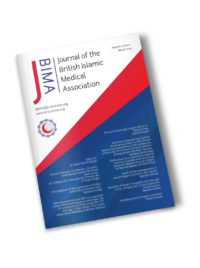
Introduction
The COVID-19 Pandemic has highlighted severe health inequalities due to ethnicity, culture, religion or language 1, particularly for refugees, migrants and diaspora communities 2. Physical Activity is an important independent risk factor for several health conditions Availability of evidence-based, culturally competent Physical Activity promotion can significantly impact ethnic minority population health 3 but remains elusive as translation is often ignored, with interpretation services taking precedence. Most written information translation in healthcare is either done in a resource rich setting (research, pharmaceuticals) or done in an ad hoc way with little governance or quality control: Our aim was to develop a practical translation framework and quality testing standards for patient information material which could be reproduced by most healthcare provider services whilst maintaining standard and effectiveness in a resource efficient way.
Methods:
Our multi-disciplinary team evaluated evidence from several databases including, healthcare and Linguistics, and developed a multi-disciplinary translation pathway using input from Healthcare Translation Specialist Linguists. We tested our framework by translating a single motivational leaflet and compared it with the standard approach (solo translator) commonly adopted by most healthcare service providers.
We recommend two focus groups one including bilingual clinicians and the other including patients and created a protocol for their optimum functioning. We designed an assessment framework for reliable comparison of translations, to aid reconciliation using focus group scoring. Results: The assessment framework was divided into sections addressing different aspects, including assessor competence, health literacy and cultural appropriateness. The scores suggest overall better translation quality for Multi-disciplinary over solo translation.
Conclusion
We find that a Multi-disciplinary translation protocol improves healthcare translation quality, in a time efficient and resource efficient way; and a scoring system helps engage non-speakers of the target language to engage in reconciliation, and evaluation. We identified training opportunities for bilingual staff, and potential to scale the model for a steady production of quality translations.
References
- Bambra C, Riordan R, Ford J, Matthews F. The
COVID-19 pandemic and health inequalities. J
Epidemiol Community Health. 2020 Nov 1;74(11):964 - Anthias F. Evaluating ‘diaspora’: beyond ethnicity?.
Sociology. 1998 Aug;32(3):557 - Koshoedo SA, Paul-Ebhohimhen VA, Jepson RG,
Watson MC. Understanding the complex interplay of
barriers to physical activity amongst black and minority
ethnic groups in the United Kingdom: a qualitative
synthesis using meta-ethnography.BMCpublic health.
2015 Dec;15(1):1-6.

